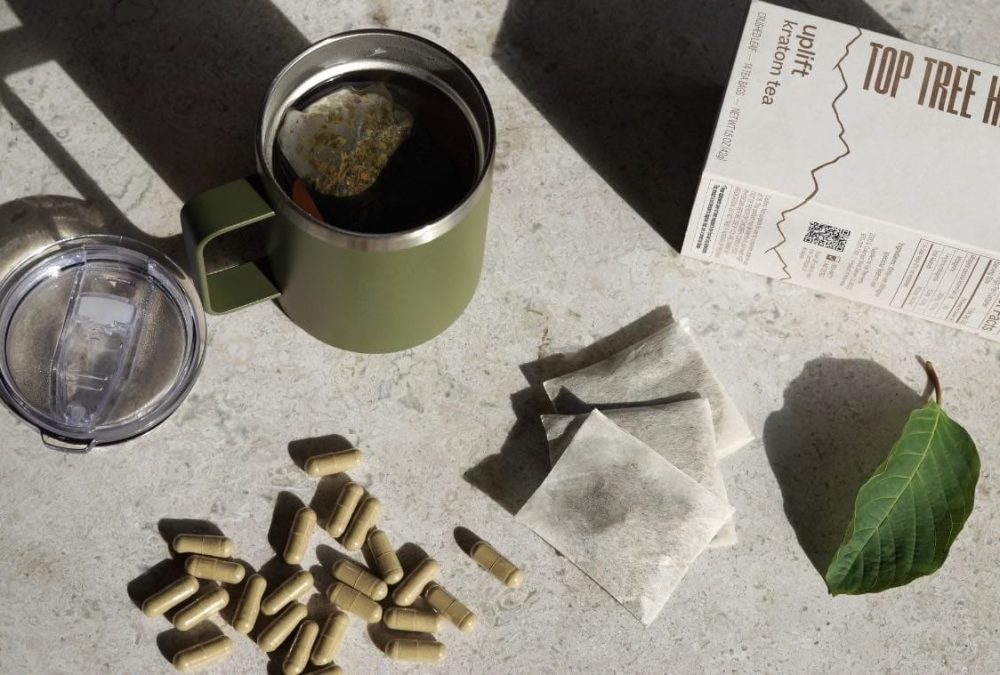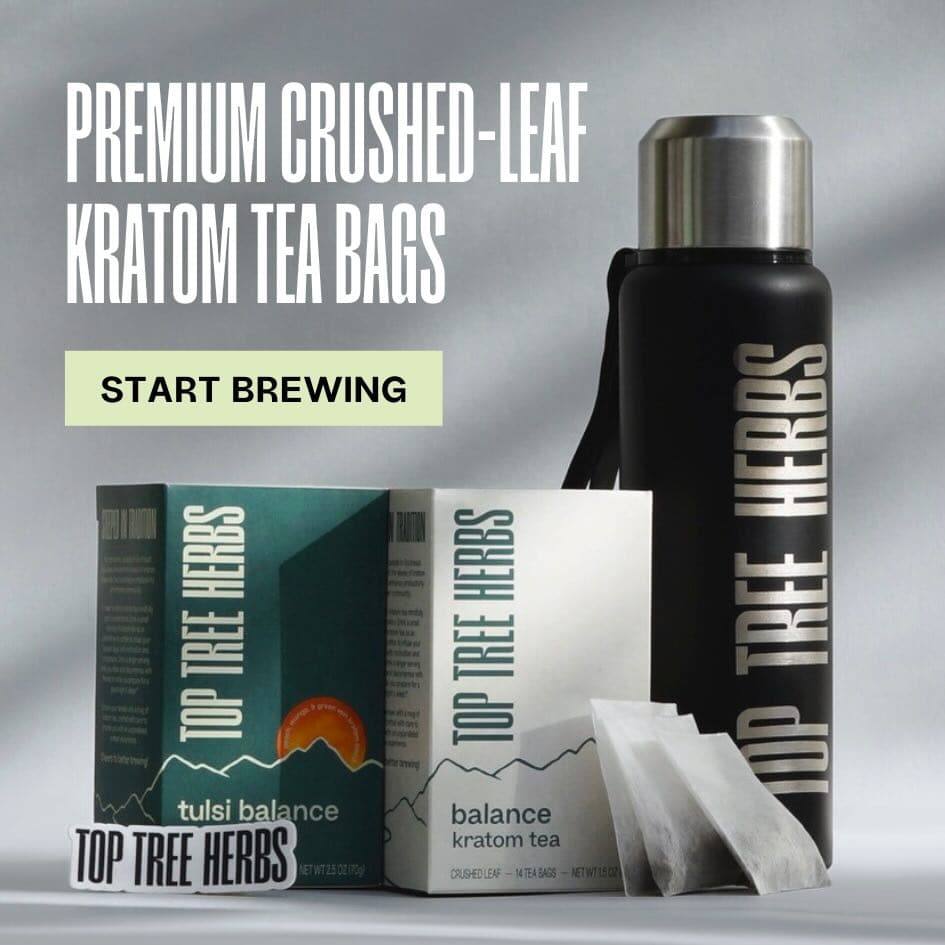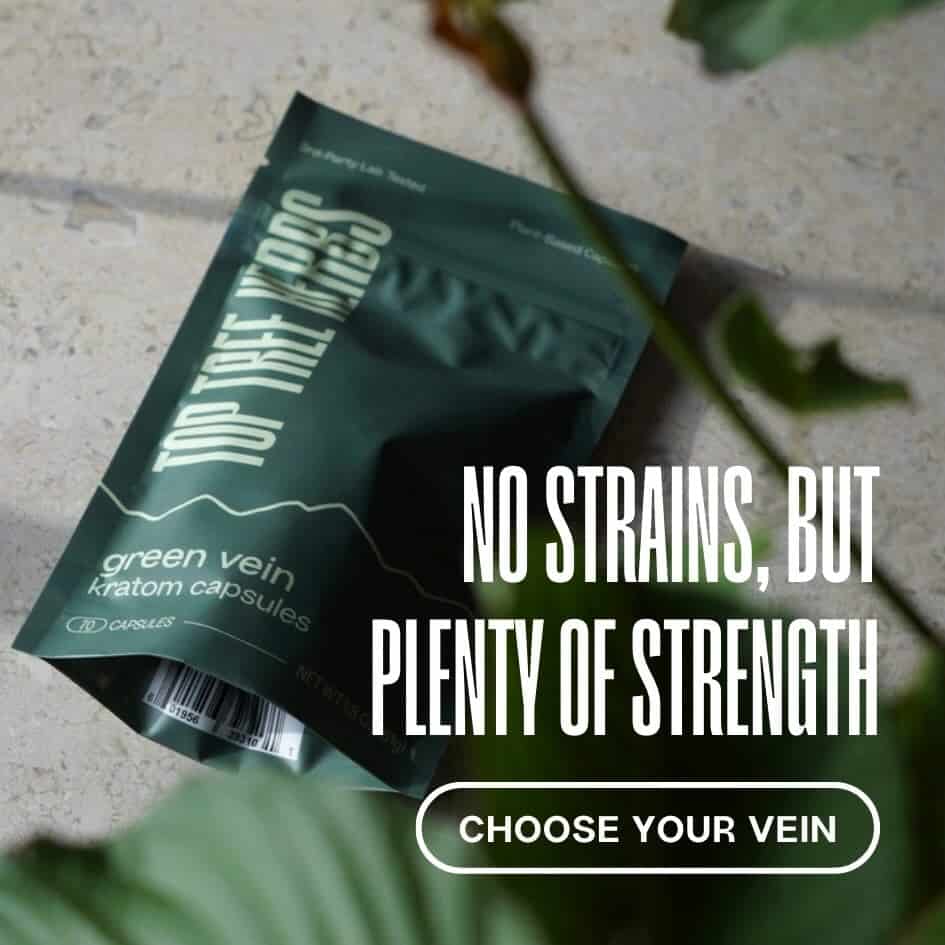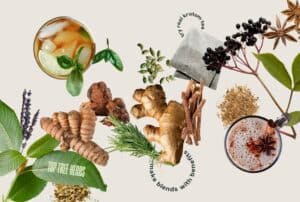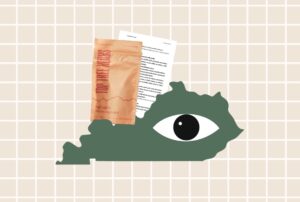In today’s commercialized world, kratom comes in many different shapes and sizes. If you’ve heard of kratom, you are likely familiar with the run-of-the-mill micronized powder offered by most vendors. You may have also heard of kratom extracts, usually in pill or liquid-shot varieties. Today, however, we’ll be discussing the ins and outs of kratom tea and kratom capsules.
- What is kratom? Where kratom comes from & how it could benefit you
- Why powder is the cheapest way to consume kratom, but not the best way
- Kratom capsules vs. kratom tea guide
- Benefits of kratom tea bags
- Kratom tea brewing guide
- Kratom capsule pros and cons
- How to choose the right type of tea or capsules
- Overview: TLDR of kratom capsules vs. kratom tea
But before we get into a kratom tea/kratom capsule comparison, let’s transport ourselves to Thailand.
What is Kratom?
Kratom is the common name for both the Mitragyna speciosa tree and the products made with its leaves. M. speciosa is an evergreen tree found in South East Asia. There, it grows wild in wetland forests, and people also grow it on plantations.
Kratom is a botanical cousin of coffee. Both belong to the Rubiaceae family of plants. Regardless of whether you use crushed-leaf kratom tea or kratom capsules, it all comes from the same plant.
Active Compounds Found in Kratom Capsules and Tea
Kratom trees produce over 40 alkaloids. These alkaloids are built around an indole chemical structure. In the dry plant leaves, alkaloids typically make up 0.05%-2% of the weight. Currently, scientists postulate that they evolved for the purpose of insect deterrence.
The most abundant active compound found in Mitragyna speciosa leaves is the alkaloid mitragynine. Kratom alkaloids are frequently referred to together as “mitragynines,” and many have a similar structure to mitragynine itself.
Some other common alkaloids are: 7-OH-mitragynine, paynantheine, speciociliatine, mitraphylline, isorynchophylline, speciogynine, and corynoxine.
Other indole chemical structures found in nature that you might be familiar with are psilocybin, serotonin, DMT, and tryptophan.
Early-stage pharmacology studies conducted on mice have demonstrated that the alkaloids in kratom may affect several parts of the brain.
These studies suggest some kratom alkaloids target the same spots of the brain where the “affection” chemical oxytocin and the endorphins of the “runner’s high” bind, namely, mOR. Some kratom alkaloids also target the serotonergic system, which is not surprising given their shared indole backbone.
What Does it Do?
Kratom is a wonderful and intriguing plant. It can provide different effects at different serving sizes. The effects depend on your size and experience level, as well as a few other contextual factors.
For regular size tea bags (3g of kratom leaf), one to two tea bags typically provides an energizing, uplifting effect. Students, professionals, and athletes alike use it for its motivation and thought-clarifying benefits.
Three to four tea bags typically provides more relaxing effects. Larger amounts are thus great for supporting post-workout relief or unwinding in the evenings.
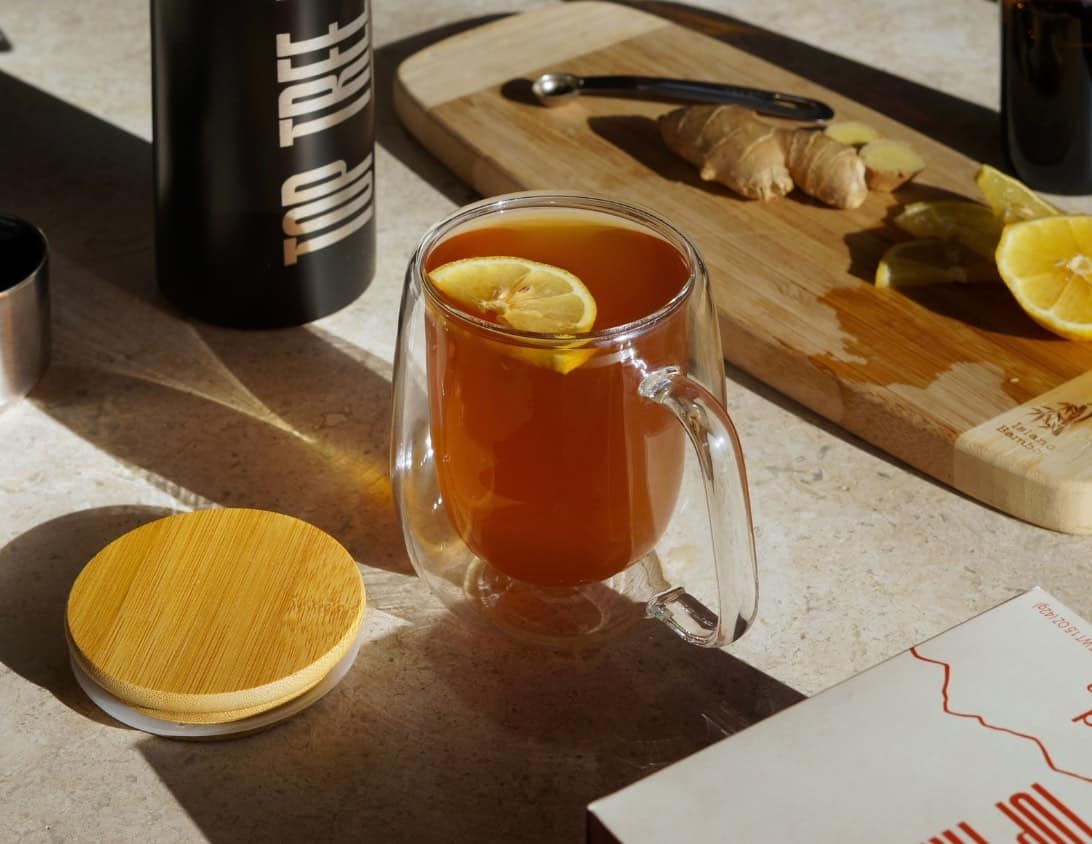
What is Kratom Used For?
There is a Thai buddhist temple with an inscription describing how people used kratom to stop diarrhea. The inscription dates back over 350 years. This, to our available knowledge, is the oldest record of the use of kratom.
However, many researchers believe that the traditional use of kratom started long before that.
The vast majority of the history of human use of kratom leaves centers around Thai laborers. People often use kratom to extend the productive hours of a long, hard day—just like they would do with coffee. They enjoy it for its ability to mitigate the heat of the sun and the exhaustion of work.
Is it Normal to Swallow Kratom Leaves?
Kratom is traditionally consumed as a chewed leaf or as a steeped tea.
To get kratom’s benefits through chewing, a farmer will pick a kratom leaf from a tree, pull off the stem, and roll the leaf into a quid. The farmer will then chew on the quid for a little less than a minute before spitting it out. In no time, the farmer starts up working again.
At other times, people collect kratom leaves and simmer them for several hours to make a tea. The tea is then shared among friends and coworkers.
The tea leaves are left behind, not consumed. In traditional settings, you’ll rarely see someone swallowing whole kratom leaves or kratom powder.
It’s certainly convenient to swallow kratom powder (loose or in kratom capsules). However, eating the leaf seems to be connected to stomach discomfort for some people. The easiest way to avoid this is to use moderation—or switch to kratom tea!
Kratom in the United States
The most likely story people tell about kratom’s introduction in the United States centers around American soldiers in Vietnam. After their service, Americans returned to the US bearing leaves, along with stories of the pleasant effects of a Vietnamese tree.
Following this period, the record of kratom in the United States was quiet for over a decade. However, in the early 80’s there is evidence of people growing kratom in the United States. At that time, renowned ethnobotanist and cultural icon Terence McKenna was cultivating kratom in Hawaii.
It wasn’t until the early aughts that kratom became a widely available commercial product. Initially confined to nerdy forums, kratom soon started making an appearance in many retail stores.
In 2016, at the time of the DEA’s failed ban attempt, kratom exploded in popularity.
Today, it is estimated that there are 10-15 million kratom consumers in the United States. In fact, the US imports thousands of tons of kratom annually.
Why Powder is Not the Best Way to Take Kratom
As we mentioned earlier, most kratom is sold in powder form.
The decision to sell kratom as a micronized powder was not made to benefit consumers. Rather, kratom powder proliferated as the result of the logistic and economic forces intrinsic to global commerce.
Forgotten Traditions and Flavors
Unfortunately, manufacturers of kratom powder disregard tradition and taste. In fact, many people who are interested in kratom it have no idea that it comes from tree leaves. As a result, most kratom consumers are alienated from the full experience of kratom.
With kratom capsules and powder, there’s no engagement with nature and tradition. You swallow them solely for the effects, with little ability to enjoy the process.
There’s nothing actually wrong with this, of course. Still, there are great parts of consuming kratom people are missing out on, like drinking kratom tea that tastes good or having the opportunity to share it with friends.
Economic Incentive to Make Micronized Powder
To understand why most people in the United States take kratom as a powder, let’s start by examining the process of how it gets here.
Most commercial kratom comes from large plantations of cultivated kratom in Indonesia. As the rubber industry has waned, kratom farms have replaced many former rubber plantations.
To make kratom powder, farmers first harvest kratom leaves from the trees. Next, they wash them of any dirt. After cleaning the leaves, the farmers lay them out to dry.
How Mitragyna speciosa Leaves Are Turned into Kratom Powder
Once dried, the farmers grind the kratom leaves into micronized powder. Some farmers use state-of-the-art, food-grade stainless steel mills to grind the leaves. Other, typically smaller, operations have been caught using WWII-era coffee grinders. This results in occasional heavy metal contamination.
However, this is not the only cause of heavy metal contamination, which has become a hot-button issue in the kratom community. Other hypotheses include contaminated groundwater or metal levels in volcanic soil that are too high to safely grow kratom.
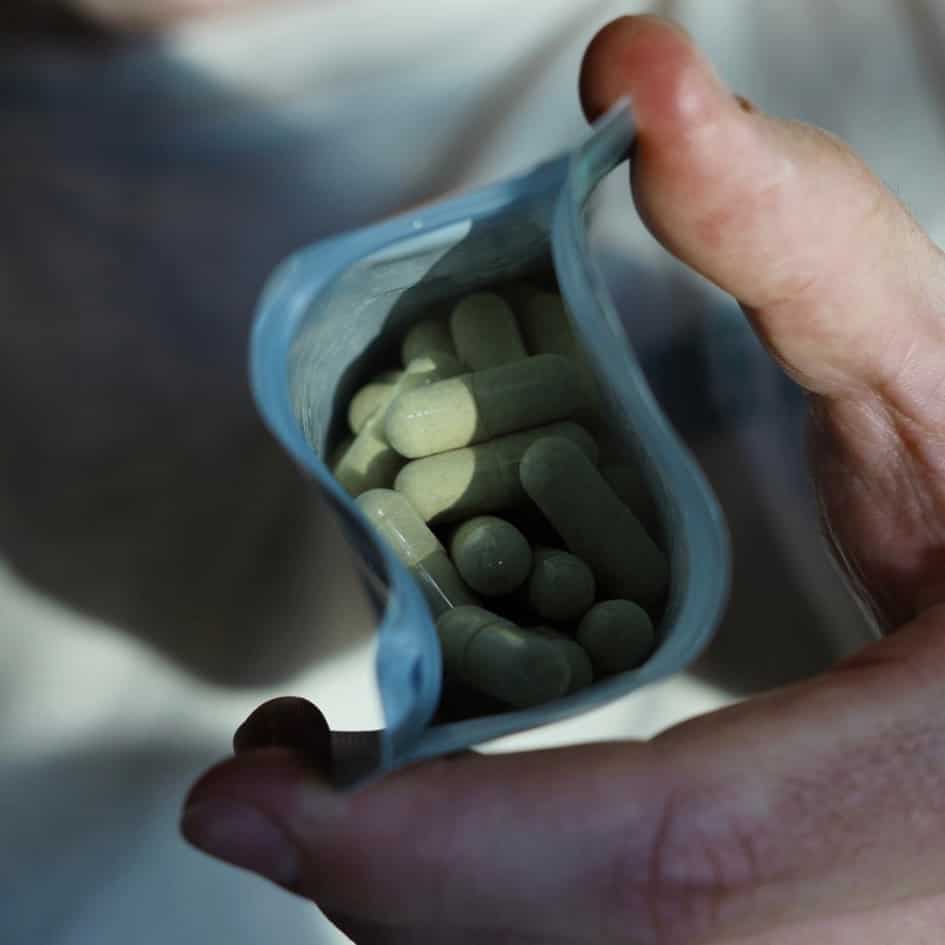
Indonesia is, after all, the volcano capital of the world. Volcanic activity can cause heavy metals to accumulate in soil. This is one reason it’s so important for vendors to provide AKA cGMP certified and tested kratom.
Kratom’s Global Trek
The US is the largest kratom-consuming country in the world, and most of America’s climate isn’t suitable for growing kratom. Indonesia—the producer of the vast majority of kratom used in the United States—is on the other side of the globe. This makes shipping one of the most crucial and complicated pieces in the kratom puzzle.
The primary method for international commercial shipping involves behemoth boats which carry scores of giant metal shipping containers. When it comes to kratom, shippers and importers prefer micronized power. Relative to crushed leaf, over three times more kratom powder can be packed into a container.
In short, crushed leaf kratom—which is what we use to craft kratom tea bags—takes up far more space than powder for the same weight. This means we pay a shipping premium to bring you the best kratom to make tea that actually tastes good.
Kratom Capsules vs. Kratom Tea
Now that we’ve covered the sociocultural context in which kratom products exist, let’s dive into the comparison between kratom capsules and kratom tea bags.
Importantly, we are only discussing the differences between high quality, lab tested kratom products. Low quality products vary greatly in their consistency, and don’t make for fair comparisons.
When you get kratom on the cheap, you may receive good kratom, or you may get dangerous, contaminated kratom—or even an imposter bag of powdered leaf material that isn’t kratom at all.
So no matter which type of kratom you choose after reading this, make sure it’s high-quality and that you understand how to safely consume it. The key to enjoying both kratom capsules and tea bags is to use moderation and understand the pros and cons of each in different situations.
Is Kratom Tea Powder the Same as Real Kratom Tea?
Before we tell you what real kratom tea is, let’s start with what kratom tea is not.
Many companies use the term kratom tea to refer to powder, which consumers mix into liquid and drink. In our opinion, you don’t make kratom tea by stirring micronized kratom into a cup of hot water. Further, you don’t make kratom tea by putting kratom powder into a sports drink or a cup of orange juice.
Anything that involves swallowing the kratom powder instead of steeping the kratom to extract its beneficial compounds is not actually tea. We prefer to call the sandy, gritty, and unnecessarily bitter kratom powder mixtures “kratom slurries.”
What is real kratom tea, then? Traditionally, kratom tea is brewed from freshly picked, whole leaves. However, kratom trees don’t grow naturally in the US, and fresh leaves aren’t widely accessible.
Kratom Tea Bags Simplicity
Clearly, kratom has entered the modern era, and the traditional practices have been irrevocably broadened. On one end of the spectrum, you have traditional fresh-leaf tea and chewed leaves. On the other end, you have kratom powder and capsules, gummies, and even bottles of highly concentrated mitragynine extracts. Kratom tea bags are the bridge between these two worlds.
Tea is a simple, delicious, and a vast upgrade from tossing and washing powdered leaf matter.
In the US, the easiest and best way to brew kratom tea is to use kratom tea bags. Good kratom tea bags are filled with premium, crushed leaf kratom—not powder. Micronized powder fits through the pores of tea bags, resulting in a gritty tea.
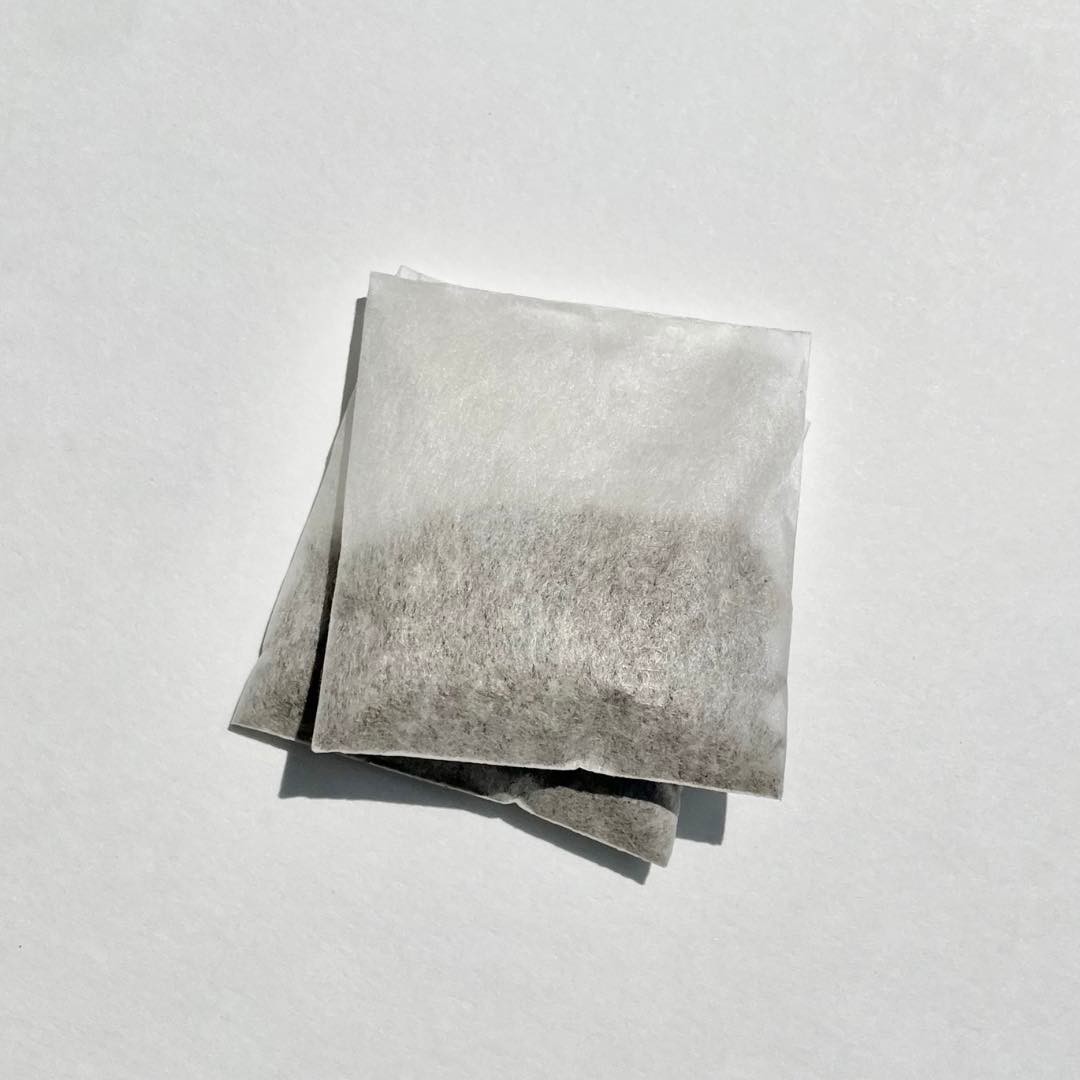
Benefits of Kratom Tea Bags
In our humble-yet-well-researched opinion, kratom tea bags are the best way to consume kratom.
Firstly, this time-tested tradition has a history of safe use. Unsurprisingly, we can learn a great deal from the centuries of indigenous knowledge and practice.
Secondly, in our experience, drinking kratom tea is a bit easier on the body than eating kratom powder. A large percentage of kratom consumers report occasional stomach discomfort. When you brew tea, you don’t have to swallow the extra leaf material full of insoluble fiber. So it’s easy to see why people are switching to kratom tea.
Kratom Tea Taste
Another benefit is the taste. “Tossing and washing” kratom powder and drinking sandy kratom slurries are both unnecessary unpleasant activities. Brewed kratom tea, on the other hand, is far more enjoyable to drink.
Plain kratom tea has the flavor, depth, and profile of a good cup of coffee—rich, bitter, and earthy. You can customize it with herbs and natural flavors to make a perfect brew. We also have a whole recipe book full of delicious ways to brew your next cup of kratom tea!
Kratom tea bags are even available as pre-made blends with other herbs and spices, like peach, mango, and rooibos kratom tea or cacao kratom tea. These blends are designed to functionally fit into your schedule.
Finally, you can drink kratom tea slowly over time. Relative to the effects of quickly consuming powder or capsules, the effects of sipping tea will be more gradual.
To Brew Kratom Tea, Follow These Simple Steps:
- Add kratom tea bags to an insulated thermos. If you don’t have a thermos, use a well-insulated mug to prevent the tea from losing heat as it steeps. You can also simmer your tea in a pot on the stove.
- Squeeze 1-3 tsp lemon or lime juice over your tea bags. This step isn’t necessary, but yields a slightly stronger brew. Avoid adding any citrus if you plan on using creamer.
- If using a thermos, boil water and pour it over tea bags. Cap and let the tea steep for 20 minutes. Using an open mug? You may need to reheat your tea before the 20 minutes is up to maintain a higher temperature. If you’re using a pot on a stove, add cold water to the pot and bring it to a boil. Lower to a simmer, cover, and continue simmering for at least 15 minutes.
Enjoy your kratom tea! Or, stick it in the fridge to chill to make iced kratom tea, which also tastes delicious.
As you can tell from the instructions, the brewing process is much simpler when you have a thermos. If you need one, head on over to our teaware shop where we take a loss on our sales of thermoses to empower you to make the best kratom tea possible!
The Place for Kratom Tea Bags in Normal Life
There’s one more item on the Kratom-Tea-Bag-Advantages-Over-Kratom-Capsules List: its ability to change the world.
By getting more people to try a type of kratom that is familiar and closer to tradition practice, we’ll engender greater understanding of the plant, and normalize it more easily.
We know that’s a little hyperbolic, but here’s why it could become a reality. By getting more people to try a type of kratom that is familiar and closer to tradition practice, we’ll engender greater understanding of the plant, and normalize it more easily.
Using kratom tea bags can help destigmatize the leaf that millions of people consume daily.
Drinking kratom should be as fun, delicious, functional, and easy as having a cup of coffee. When that goal is realized, we’ll know that kratom has finally shed its stigma. Unfortunately, normalization is a little bit more difficult when spoon-feeding yourself brownish-green powder.
Now, onto the benefits and drawbacks of kratom capsules!
Guide to Kratom Capsules
Kratom capsules are typically gelatin-based or vegetable-cellulose-based capsules filled with micronized kratom powder.

Kratom Capsule Pros and Cons
Essentially, this formulation is an improvement upon the toss-and-wash method. You still have to swallow powder, but you don’t have to taste it. Additionally, capsules contain pre-measured amounts of powder, so you don’t have to weigh the powder yourself
Capsules deliver the kratom to your gut without allowing it to hit your taste buds. They taste completely neutral.
However, you are still digesting the raw leaf material. When you make tea, you extract the desired compounds in water first and leaf most of the leaf material in the tea bag. Contrastingly, with capsules you extract the compounds from the leaves directly in your gastrointestinal tract.
Kratom Capsules Convenience
Kratom capsules really have one major thing going for them that justify their use above kratom tea bags: bare-minimum preparation.
Though tea may be optimal in many ways, there are a few instances where it’s definitely easier to consume capsules instead.
Travel-Friendly Kratom Option
For instance, if you want bring kratom on a plane for a trip or when you don’t have a way to boil water, kratom capsules are a great choice.
US airports prohibit you from taking liquids over 3.4 oz in your carry-on. You could ask the terminal Starbucks or flight attendants for some boiling water to add to your travel thermos, but otherwise you won’t be able to enjoy your kratom until you land.
Bus rides and train rides are bumpy. On a road trip, you may not be able to bring brewing equipment like a thermos or mug.
What if you just overslept and don’t have time to prep your tea before you start your commute to work? Having kratom capsules on hand for instances like these is helpful. You’ll be able to take them quickly, without making a mess.
Considerations When Buying Kratom Capsules
There’s another important reason that swallowing kratom powder may not be the best option. Kratom powder can be contaminated.
While we think that much of the fuss about contaminated kratom is hyped up by the FDA as part of their campaign against kratom, there is some truth to the matter.
Kratom powder is treated as a commodity, and the cheapest option tends to attract the most customers. This has engendered a brutally competitive market.
Kratom Capsule Powder Cut with Other Leaves to Increase Sales
In this competitive space, some vendors insist on racing to the bottom. In order to supply kratom at the prices demanded, some kratom farmers have been mixing in leaves from other random trees in the forest to increase the weight of what they are selling.
Thus, cheap and/or non-AKA-cGMP-certified kratom products could contain a green powder that’s not 100% kratom!
Bacterial Contamination in Kratom Powder
Another issue is the risk of bacterial contamination. Top Tree Herbs has their kratom lab-tested to ensure it’s free of microbiological contaminant, but not all companies do this.
Some of the cheaper kratom products are grown in regions where the leaves are processed and washed from a river that has raw sewage flowing through it. As a result, cheap kratom products have occasionally been found to be contaminated with E. coli.
If you’re purchasing kratom capsules or kratom tea from a company that doesn’t do lab-testing, there are potential added benefits to choosing tea. Since you use boiling water to make kratom tea, it has a built-in decontamination process.
Top Tree Kratom Capsules
We want to take a moment to explain why we offer kratom capsules. If you’re an old Top Tree Herbs customer, or if you have the perception that we’re just a tea company, the fact that we’re offering kratom capsules may surprise you.
We went back and forth endlessly before we made the decision to offer kratom capsules. We still see ourselves as the kratom tea bag company. However, we’re committed to promoting healthy use of kratom just as much as we’re interested in returning to the traditional practices.
There are lingering issues in the kratom industry regarding safety and cleanliness. Some brands don’t have trustworthy capsule options. So we decided offer kratom capsules that undergo the same amount of rigorous testing as our kratom tea bags.
We test each batch of kratom multiple times to ensure that it has no heavy metal or microbiological contamination.
We source the kratom from well-compensated farmers who, as a result, are able to have upward socioeconomic mobility. The positive relationship with the farmers ensures that we are using only 100% pure, premium kratom leaf.
Striving to bring a safe product to the kratom market isn’t our only reason for offering kratom capsules. We first broached the idea when co-founder Sam Weber found himself at the airport, wishing he had some kratom tea to relax on the plane, but unable to make it.
So Top Tree Herbs now offers kratom capsules made with vegetable cellulose, so they’re entirely plant-based.
How to Choose the Right Type of Kratom Tea or Kratom Capsules
Now that you understand how kratom capsules and kratom tea compare to one another, you can move on to determine which type of kratom tea or kratom capsules you’re interested in. Each type of kratom comes in a few varieties.
Most companies categorize their kratom products with kratom strains. Top Tree Herbs is a little different. Kratom strains are actually largely fabricated and mythologized, so we don’t use them to label our teas and capsules.
Here’s a general guide for which kratom varieties are best for which purposes.
1. Best Option for Morning Motivation: White Vein Kratom
“Nothing helps wake you up like a cup of coffee.” Well, that was the common maxim until our Uplift white vein kratom tea and our white vein capsules hit the shelves. When you want a morning boost without caffeine, this is the vein color we recommend.
Additionally, Uplift is a great tea to drink before a workout or long study session. Make sure you don’t drink too much at once, because kratom has more relaxing and relieving effects when you drink larger serving sizes.
2. The Afternoon Pick-Me-Up: Green Vein Kratom
If you’re looking for an afternoon pick-me-up, brewing green vein kratom tea or trying green vein kratom capsules should be on your agenda. Our Balance green vein tea bags are crafted to provide the perfect balance between red and white vein kratom qualities.
3. How to Ease into Evening Relaxation: Red Vein Kratom
Our Unwind red vein kratom tea bags are the perfect type of tea to brew for a chill evening with friends, or as part of a bedtime ritual. “Red equals bed” isn’t the perfect axiom for every brand’s red vein products or for every person. However, we craft our red vein teas and capsules specially to provide these relaxing benefits.
Since the effect of kratom depends on your serving size, the evening teas and herbal blends are best enjoyed as a strong brew. Start low and work your way up!
Kratom Capsules vs. Kratom Tea Bags Final Thoughts
After hearing the qualities of both kratom capsules and kratom tea bags, which do you think is best for you? Let’s recap some of the main points in the kratom tea vs kratom capsules discussion.
Kratom Tea Bags Overview
- Real kratom tea tastes great, and isn’t just a means to an end
- Tea bags are made with crushed leaf, and more closely resemble the traditional practices for consuming kratom
- Tea bags reduce the need to consume insoluble plant fiber
- Boiling water can be used in a decontamination process (we still recommend starting with lab-tested kratom)
- Kratom tea bags can come with other herbs for enhanced flavor and effect
- The tea formulation helps normalize the consumption of kratom.
- Since you don’t have to digest the powder, you may feel the effects of kratom tea faster
- You can get continual effects by sipping your kratom tea slowly
Kratom Capsules Overview
- Kratom capsules are convenient and travel-friendly
- Capsules contain pre-measured servings of kratom
- Swallowing capsules is typically more enjoyable than swallowing loose powder
- Kratom capsules have zero taste
- You are still swallowing kratom powder, so you consume mindfully to prevent over-consumption
- When ordered from a reputable vendor, capsules contain pure, lab tested kratom
The Verdict: Capsules or Tea?
So there you have it, the lowdown on kratom in capsules versus in a mug. Whether you’re a capsule connoisseur or a tea aficionado, the choice is yours, but let’s be honest—there’s something undeniably charming about sipping on a well-brewed cup of kratom tea.
It’s like giving a nod to tradition with every sip, while your capsule-popping friends might just be missing out on the full, leafy experience. Tea has survived the test of time and is the preferred traditional preparation. It’s delicious, and we see it no differently than a cup of coffee.
Yet once in a while, a caffeine pill beats a delicious cup of joe. That’s how we view kratom capsules and kratom tea. When you’re in a hurry and on the go, kratom capsules can save the day.
No matter which you choose, you should only consume kratom tea or kratom capsules if you are certain that they contain lab-tested, clean kratom.
Remember, in the world of kratom, it’s not just about the short-term destination (feeling great). It’s also about enjoying the journey, and about supporting your long-term health. Cheers to that!
